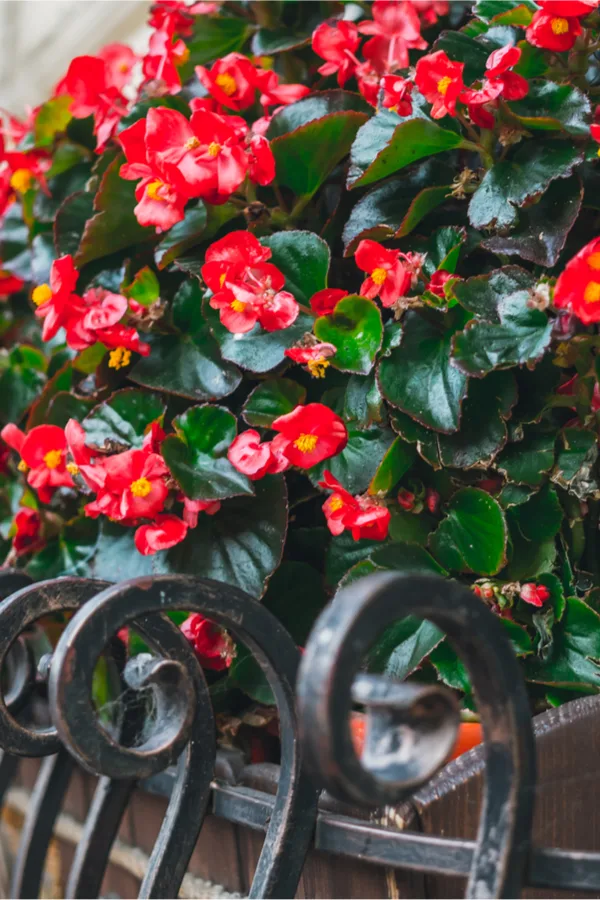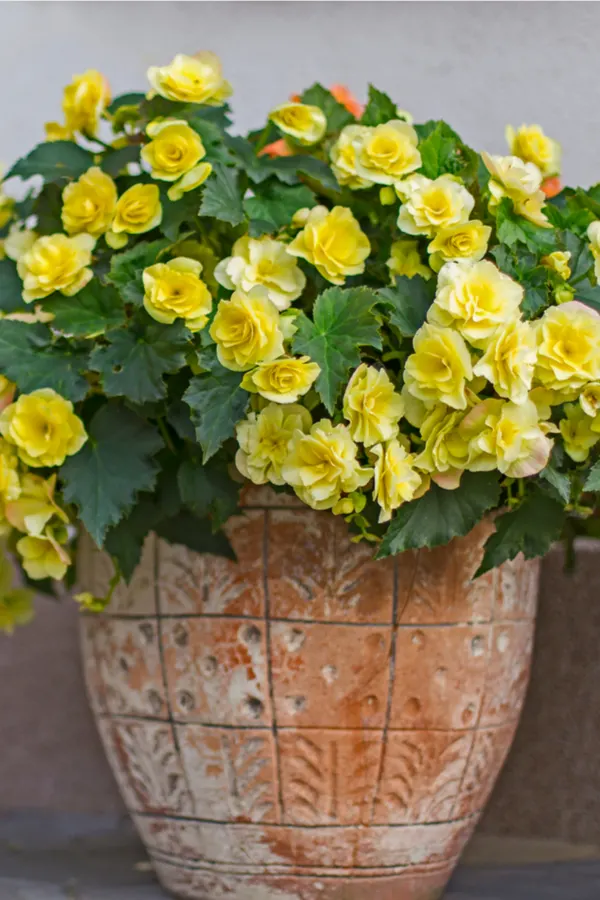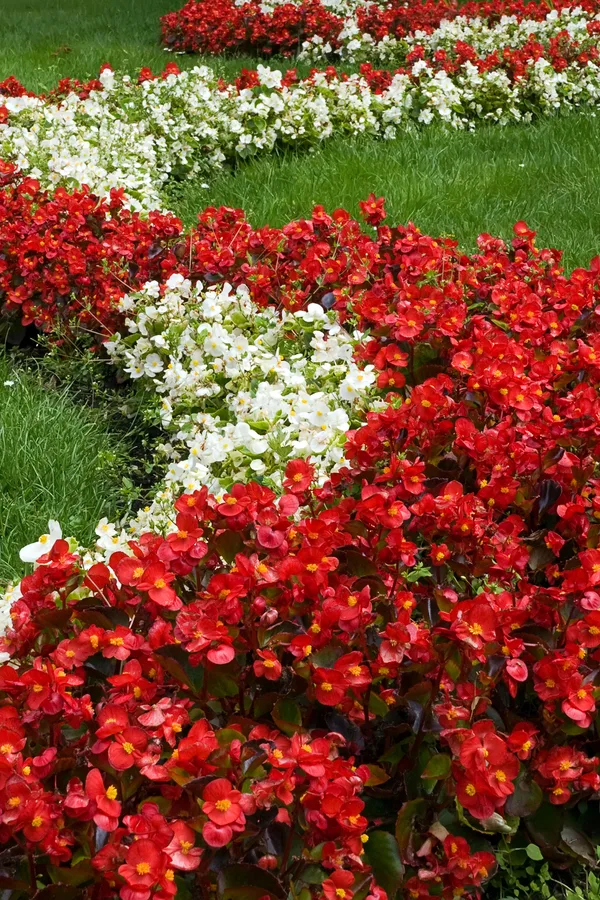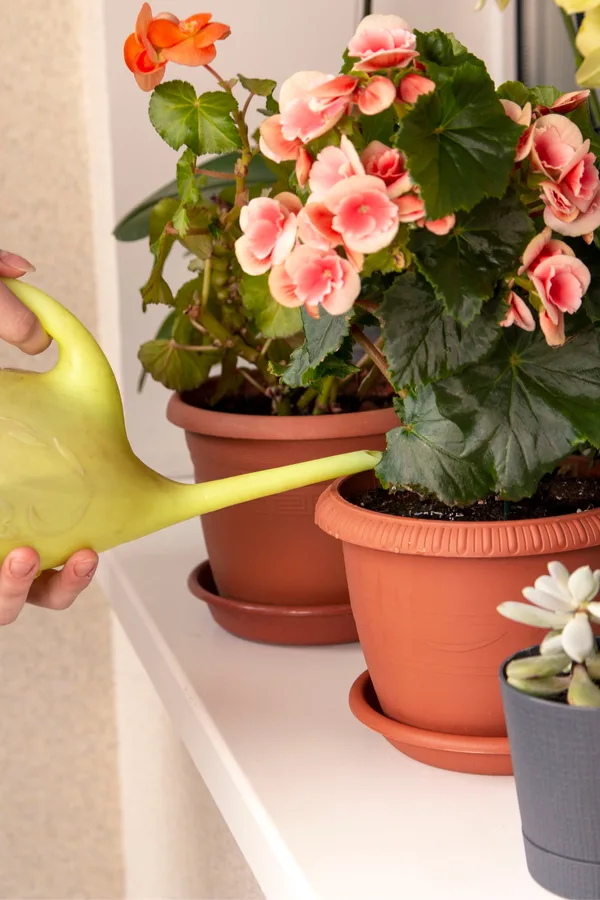Begonias are the perfect choice for adding big color to your flowerbeds, pots and containers, especially when you can keep them blooming strong from late spring to late fall.
With their beautiful canopy of leaves, and a wide array of colorful bloom and foliage options, begonias are becoming widely popular once again. And with good reason – this old-time classic flowering annual has all-season lasting bloom power!
Unlike many other annual flower selections, begonias have a slower, more controlled growth pattern. As their foliage fills with early season flowers, the plants tend to keep on producing massive bloom sets without running out of steam by late summer or fall.

But even more, begonias hold up well to the rigors of summer’s heat and often dry conditions. This durable plant can handle a fair amount of sun or shade. And all without losing it’s covering of blooms. It’s just one of the many features of this gorgeous plant that makes it perfect in so many locations around the home.
How To Keep Begonias Blooming All Season Long
So how do you keep begonias growing and blooming strong all summer long?
Quite simply, it all comes to down to taking care of four key elements :
- providing good soil that drains well
- selecting a suitable location
- providing adequate water
- supplying plenty of nutrients for blooms and flowers.

If those four needs are met, your begonias are almost certain to flourish! Here is a look at each, and how to provide the perfect environment for great looking plants.
#1 Planting / Soil
Whether planting begonias in pot, flowering baskets, or directly into flowerbeds, soil quality is vital to strong growth.
Begonias will not perform well in overly wet soil. Their tuberous root systems are highly susceptible to rot when unable to dry out between rainfall or hand watering.
In fact, when and if begonias struggle, it’s almost always due to poor soil conditions. Because of this, it’s important to provide them with loose, fertile and well-draining soil when you plant.

For pots and containers, use a high quality potting mix that has plenty of vermiculite or perlite to help drain excess water away. When planting directly into flowerbeds, work in generous amounts of compost to build in nutrients and better drainage.
#2 Selecting A Great Location – How To Keep Begonias Blooming
Begonias can handle a bit of direct sun each day, but need to have a fair amount of shade as well. And that is exactly why where you locate your plants can have a big impact on their success.
Select a location receiving more direct morning or evening sunlight than mid day sun. Early morning / late day sunlight is much cooler with less intense rays. By keeping begonias out of the mid-day direct sun, the plants have less stress, and will produce more blooms.

With that said, there are a few newer varieties that have been developed that can handle more full sunlight and heat. Be sure when purchasing to read the planting label carefully to know which variety you have.
As for spacing, in beds, allow about 6″ to 8″ between each plants. In a flowerbed setting, this allows enough room for plants to grow together. Spacing in pots can be closer at about 2″ in between plants for a more compact, full look.
#3 Watering – How To Keep Begonias Blooming
Begonias rely on moisture in the soil to keep their tuberous roots healthy and active. However, as noted earlier, too much water can cause their roots to rot and decay.
When planted in flowerbeds, begonias require about an inch of water per week to thrive. One or two light rainfalls per week are usually more than enough to provide that amount.
If there is a need to water, water in the early morning. This allows time for the soil to dry a bit through the heat of the day, preventing any chance of root rot from standing or pooling water.
For containers and hanging baskets, the key is to allow the soil to dry out between waterings. Place your index finger down into the soil to check for moisture. If dry to the touch down an inch or so into the container, it’s time to water.

Most planters and containers will need to be watered daily or every other day depending on your climate. Again, it is always best to water in the early morning to allow plants to dry out some during the day.
#4 Fertilizing – How To Keep Begonias Blooming
Providing a steady, low dose of nutrients is one of the biggest secrets of all to keeping begonias blooming big from spring til fall.
Whether you are growing in flowerbeds, containers, or hanging baskets, the constant flowering slowly depletes the soil of the resources needed to create and grow new blooms. And that is exactly where providing a little help makes all the difference!
For maximum blooms, begonias should be lightly fertilized every 10 to 14 days when grown in pots and containers. For bedding plants, fertilizing every three to four weeks is enough to do the trick.
But the real key is to use a light dose of nutrients in place of full strength applications. As with nearly all annual flowers, if given too much fertilizer too quickly, begonias will use the energy to grow more foliage and roots, and not produce blooms.

In addition to leading to less blooms, large doses of fertilizer also cause container plants to outgrow their space long before summer comes to an end.
Instead, use a a weak solution (1/2 to 1/4 of the recommended dose) of a liquid fertilizer when applying to plants. Even better, use compost or worm casting tea at a diluted rate to provide the energy. Not only are both 100% organic, they are by their very nature the perfect slow release fertilizer.
Here is to enjoying the amazing beauty of begonias this year, and to keeping them blooming strong all season long!
This Is My Garden is a website dedicated to spreading the love and knowledge of gardening around the world. We publish two new garden articles each week. This article may contain affiliate links.
